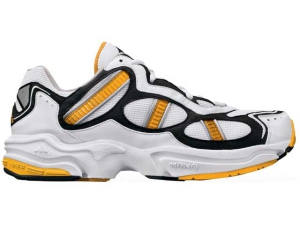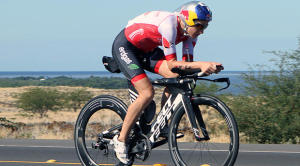Over the past few months I’ve written here about how the running shoe industry started and expanded. Most of the growth is due to two large influxes of runners. The first running boom occurred in the 1970s thanks in part to Frank Shorter and his Olympic Marathon triumph. The second was in the mid-to-late 90’s when women took over the leadership role in running market share.
Through all of this a few really good “stability” shoes have been the biggest selling individual shoes to runners. Things really started to change in the mid 2000’s and they are still changing today. Natural running and manufacturing costs were the prime movers changing the run shoe market.

There is a boom in running currently ongoing but it’s not in the U.S. It’s in Asia and specifically in China. The Baby Boomers who led the first running boom in the 70s are slowly but surely fading out of running and they are being replaced by runners who are less loyal to brand and function. As this happens the traditionally-built stability shoes (dual-density EVA) will fade with them. The shoe companies have tried to move to geometry-based “organic support" but the market has pushed back. That dynamic is going to change soon and the brand that is fully prepared will lead in organic support.
Organic support first hit the market in 2000 when Asics introduced the Gel Creed. Their testing showed that by using geometry they could build a shoe more supportive than any shoe in their line the relied on added “posting". Runners were trained at that time to believe that only a shoe with grey paint under their arch would stabilize their foot. The shoe was out of the line within 2 years.

In 2008 Adidas tried the same thing with the Adizero Aegis (highest up) and AdiStar Solution (just above). The Solution was so named because it was the solution to traditional stability. The forces however were working against Adidas. The Adrenaline GTS was the #1 shoe in running stores and minimalism was taking form. The Solution didn’t last too long.
Along with minimalism, manufacturing costs on technical running shoes began to go up in China. The brands had a choice. They could stay in China and manage through the increases or they could move to cheaper markets. Most moved to other countries to maintain their margins while giving you, the runner, the same retail price. The factories in China began shopping for new brands. Between 2007 and 2012 a number of new brands hit the market in running: Newton, Altra, K-Swiss, Zoot, Pearl Izumi, Vibram, Hoka One One and more.
At The Running Event in 2010 there were 42 brands presenting running shoes. The buzz words of the day were: minimalism, midsole drop, natural running, and barefoot running. ASICS had its new GT and Brooks had its new Adrenaline GTS but they were secondary to all of the excitement around these new buzz words. The focus on the stability shoe changed as the big brands rushed to take leadership in this new shoe market.
Nike Free, minimalism and midsole drop brought the running shoe market full circle. Up to this time the theme was over-build. If the base model of any brand shoe had its technology (Air, Gel, Hydroflow, Grid etc.); the next level had to have the tech in the heel and the forefoot. The maximum cushion shoes had to have bigger cushioning units. If you looked at the midsole in pieces before it was glued together the piece count looked something like this:
Base Midsole Layer
TPU Foot Bridge
Cushioning system heel and forefoot
2nd density for stability shoes
Top Midsole Layer

And this was just the midsole. The outsole, the part attached to the midsole that strikes the ground, was similarly complex. The more intricate pieces the better. Glue held all of this together and glue does two things. It’s heavy and it makes shoes stiff. It’s also important to know that more pieces means more molds which adds cost to the shoe.
Running shoes needed a face lift and minimalism came at the right time. One of the first and most successful shoes out of all the fray was the Saucony Kinvara. It’s simple in construction, minimalist in geometry and dynamic in feel. The midsole piece construction looked like this:
Midsole (4mm drop heel to forefoot)
Outsole (as little amount of rubber as possible)
There was something else about the Kinvara that caught the attention of many runners. Because of the wide full base of shoe under your foot it was naturally supportive. It was categorized as neutral but a great many runners wearing traditional stability shoes began running in the Kinvara with success.

Another shoe that came out during this time is the highly successful Lunar Glide from Nike. Nike never liked the traditional stability shoe. It rarely used the second-density medial post to provide support. More often its designers opted for a TPU piece. The Lunar Glide gave them the opportunity to build a supportive shoe without a post at all. Where did they go for their inspiration?
They went back to the beginning, the first shoe built for support and used a varus wedge. Turns out it’s really quite functional. If you were going to build one shoe that works for most runners across the entire spectrum of runners the Lunar Glide might be the shoe you come up with. It looks fast and light and through geometry provides enough support for most.
Simply put less pieces meant less glue which made for a better running shoe and the brands could keep prices in check. Running shoes began to change in dramatic fashion. Midsole cushioning systems began to fade away. Nike Air and ASICS Gel remain but all others are gone. Mid foot TPU bridges are gone from almost all running shoes. Uppers are now going to knit (look at the two shoes above, the Asics Roadhawk and the Hoka Gaviota). It’s an expensive set up but once the knitting factory is in place the piece cost on the upper goes way down.

During this wonderfully wild phase of midsole drop and minimalism a group of guys in France were working on a crazy looking shoe that would make running “feel” better. In 2009 they brought Hoka One One to the market. Minimalism was in full swing with brands going lighter and thinner and out comes these shoes that were the complete opposite. They were oversized. People called them moon boots, and thought it quite funny seeing them at the Outdoor Retailer show with all the minimalism brands around them.
Hokas didn’t catch on that year but it wasn’t too long after that, the move to anti-minimalist, or maximalist, shoes was underway. What set them apart were:
- Wide Base: Compared to any shoe on the market the Hoka shoes were as much as 40% wider at the base.
- High Side Walls: The high sidewalls wrapped up the side of the shoe. They made the shoes look much taller than they were. More importantly, though, they centered the foot on the wide platform giving the runner a great deal of natural support.
- Because of their minimalist midsole drop they had an enormous amount of midsole. If the heel was set at 30mm the forefoot was set and 25-26mm. Max cushion running shoes before this with 30mm heels had a 18-20 mm forefoot. That extra 5mm along with the overall width of the base made the Hoka One One shoes Maximal.
- The Forefoot Rocker: Hoka One One was not the first brand to go use a rocker in the forefoot. Pearl Izumi, as just one example, had a rocker in all of their shoes few years before Hoka One One. (The Hoka One One Bondi 4 is just above; the New Balance Vongo2 just below.)
What made the difference for Hoka was the combo of all these things elements, all working together to create the feeling people were raving about.
But what about Stability?
The natural running trend brought the market a bunch of fresh new shoes but it also taught runners to work on form more then rely on shoes. The runners who gravitated to these shoes quickly learned that shoe function (support and control) was less important than overall feel. They experimented with different shoes from different brands to find the experience they wanted. Either on purpose or simply a result, the four points above created, for Hoka One One, an extremely supportive shoe even though the designers might not have had traditional stability in mind. Indeed, Hoka’s founders insisted they made Neutral shoes, but runners who were in Stability shoes their entire running lives found shoes like the Hoka One One Bondi to be plenty supportive.

Which brings us today.
Baby Boomers - the group who populated the first and second running boom are slowly but surely fading out of running.
There is a runner/consumer mindshift ongoing. New runners replacing Baby Boomers are not as brand loyal. They wed themselves to an experience, not to a brand. They aren’t easily herded by nomenclature. They aren’t pro- or anti-stability, they simply want a shoe that feels good. They aren’t moved by the Stability lecture they get in a specialty store. There are simply too many good, and perfectly stable, shoes not in the Stability section. Many of the retail stores have shifted with this consumer. The narrative goes something like this: “Oh, you like the Adrenaline, you should try this brand out I think you’ll like what you feel.”
In 2017, 27 percent of all athletic shoes were sold online in the USA (source: NPD). This is important because the runner is bypassing one of the gatekeepers of tradition, the run specialty store. This means you entirely control your shoe decision.
Motion Control: Virtually gone as a running solution. An estimated 90 percent of all Brooks Beasts sold today are sold to walkers and people with foot problems, not runners.
Stability Shoes: That dual-density stability shoe is fading from running. Shoes like the Adrenaline and GT 2000 from Asics show up in the top-10 of running shoes in the major marathons but they are losing ground. Soon they will be out of the top 10. Ask any running store in the USA and they’ll say most Adrenalines are sold to walkers, not runners. Stability as a category doesn’t exist in China.
The brands will continue to introduce geometrically designed supportive shoes. Some recent introductions include the New Balance Vongo, Asics Roadhawk FF and Hoka One One Mach.
Retailers have to change before Stability is gone for good. Some retailers still separate shoes on the shoe wall by the categories of Neutral and Stability. As long as those retailers have a voice we’ll continue to see posting in shoes. The Brooks Transcend (below) is a perfect example. It came out as a geometrically designed support shoe.

Because of low results and a push from retailers the new Transcend (just above) is posted. The Hoka One One Arahi and Gaviota are examples as well. Hoka One One had super supportive shoes but because retailers were still talking about the Adrenaline, they built shoes with medial posts.
When the majority of retailers evolve into the basic mindset that every running shoe provides structure and remove words like Neutral and Stability you’ll see that traditional dual-density stability shoe fade into history.
After a decade of wild innovation, the run shoe manufacturing industry is in a lull, in terms of innovation. If not for the Nike Vapor Fly 4% the only technology introduced last year was new brands using the BASF midsole compound that put Adidas running on a positive track.
There is room for a brand to innovate the support shoe. The brand that focuses on Organic Support, especially if it is first-to-market in new tech, could own that category.



